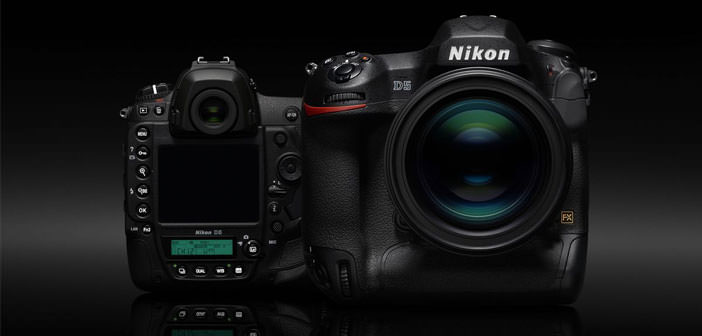Nikon has officially unveiled the new version of its flagship D5. Destined to redefine more than one standard, especially surprising range ISO and autofocus system, but there is even a 4K video.
The camera body is the usual monolithic block and to tropical look and interface exquisitely Nikon. A few millimeters more width and one and a half times more in thickness than the Nikon D4s not make much difference on a total of 160×158, 5×92 mm, so as not make a big difference in the about 50 g more – now the balance reaches 1,405 g (battery and memory card included).
There are still a few surprises, the most visible of which is the rear display (3.2″, 2.359 Mpixel, XGA resolution) with touchscreen functionality, although just playing and entering text. Invisible but more substantial, The second innovation is the new block-mirror shutter, which according to Nikon eliminates the (already low) blackout during shooting and continuous vibrations, for a pursuit of the subject even more effective.
Beyond impressive specs, this is one of the main reasons holding professional sports firmly anchored to the SLR, Nikon and rightly wanted to consolidate the advantage.

Looking at the still camera body, it can see the complete duplication of controls for the benefit of the handle vertically integrated and a few more custom buttons for added customization. The battery is the same as the D4S, which some professionals will appreciate, but thanks to more efficient electronics.
Autonomy has grown 3780 shots per charge. Unpublished (and a bit weird, to be honest) the choice of media: there will be dual-slot, but customers will have to choose between 2 traditional CompactFlash or 2 performing little-used XQD.
Within the camera, body is the first new CMOS sensor FX format (full-frame) from 20.8 Mpixel, assisted by the new-generation image processor EXPEED 5. Nikon promises, by this couple, the best color ever seen and an unmatched dynamic range.

Certainly surprising sensitivity range, which ranges from 100 to 102,400 ISO native with the possibility of working in extension between Lo (50 ISO) and Hi 5. From now on, it will be necessary, for convenience, express ISO range only in terms of stop, but for once we want to write it in full: H5 is equivalent to a maximum sensitivity of ISO 3,280,000.
Within this huge ISO range, the Nikon promises, in particular, image quality ” unprecedented ” in the internal from 3,200 to 12,800 ISO, which is currently the most used by sports photographers.
Another specification that is astonishing is that of the new AF system, which can count on 153 points, 99 of which cross. Altogether, these points will cover an extremely wide area, even if for the moment, Nikon has not spread the percentage of a covered area.
Of these 153 points, 55 points (35 cross) can be selected by the photographer, who can also choose, in AF Continuous, if you use 153, 72 or 25 points, as needed. 15 of these points are used to f/8, then even with long focal in the presence of the multiplier, and the sensitivity (up to -4 EV for the center point, up to -3EV for peripheral points) it has been extended by one stop to match the capabilities of shooting in low light of Nikon D5.

The new AF system is backed by an equally new metering module that doubles the number of pixels used, bringing the total to 180,000. A true RGB sensor secondary analyzes the scene and interprets it, giving the AF system with valuable information, and – of course – to measure the amount of light in the scene. AF module and exposure now benefit from a dedicated processor.
The shooting interval equals that of rival Canon EOS-1D X: 12 fps with AE/AF tracking or up to 14 fps in a mirror raised. The buffer Nikon D5 allows you to capture the beauty of 200 NEF (RAW) 14-bit JPEG Fine consecutive presence of cards XQD approved. To transfer large amounts of data to the PC, photographers can count, if desired, on a USB 3.0 port and an Ethernet 400 Mbps.
Finally, for the first time on a Nikon, it will be possible to record 4K video in support of photographic activity. At the moment, it is known that the recovery 4K video (3,840 x 2,160 pixels) use the central cutout of the sensor for a pixel ratio 1-to-1, and frame-rate will have 30, 25 or 24 fps, but it is not known the bit rate.
Moreover, it appears that the length of 4K video is limited to 3 minutes. Alternatively, you can record in Full HD with capacities similar to those of the Nikon D810 sets.

